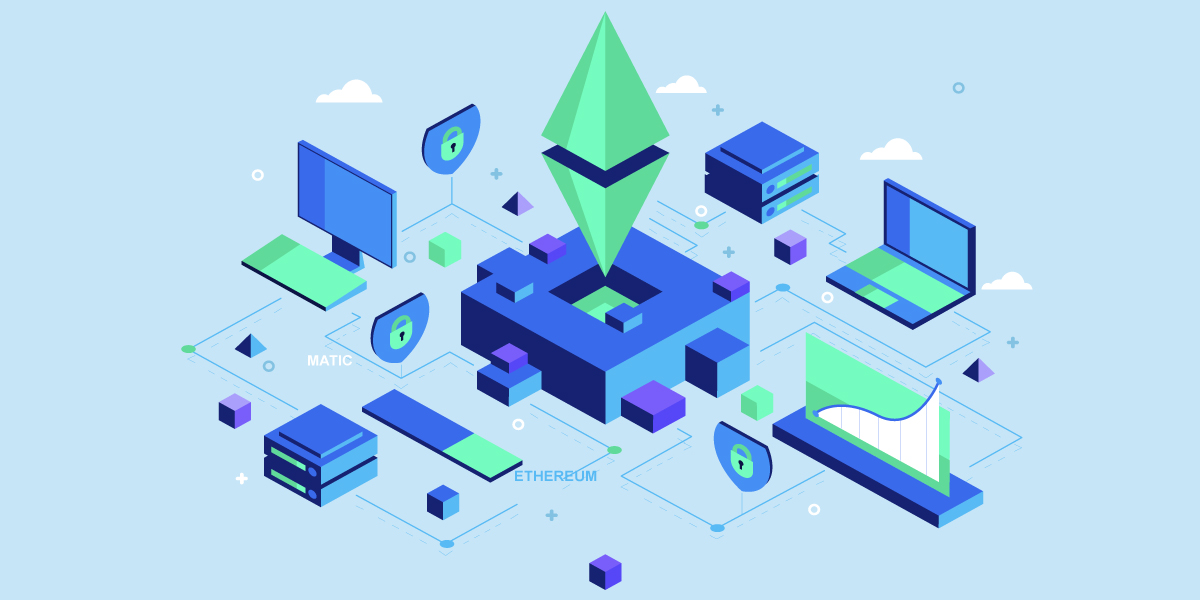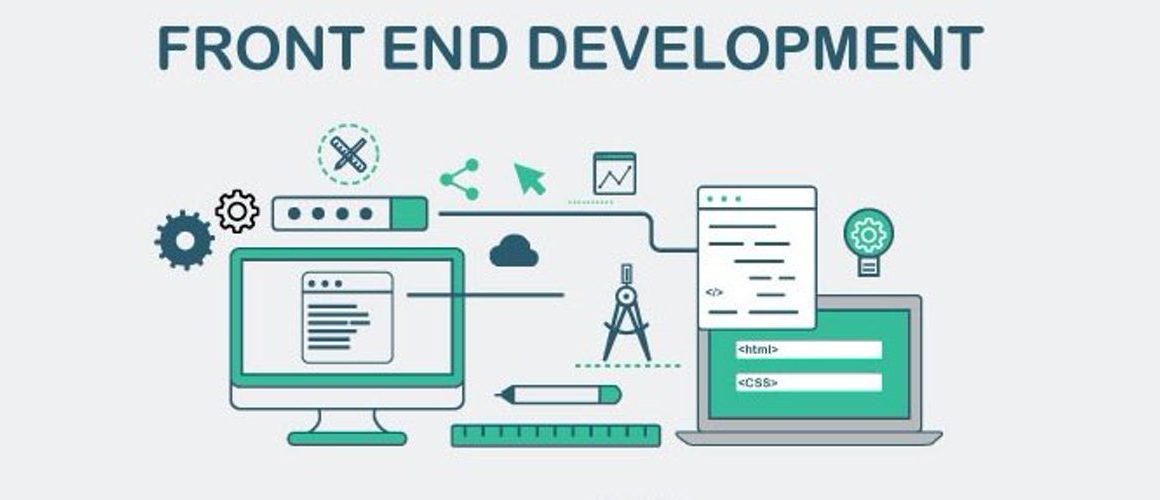If there is one topic that is doing rounds globally across the Internet and grabbing everyone’s attention, you must know it is blockchain, cryptocurrency, and decentralized app development at large. Being blockchain’s byproduct, Cryptocurrency is very popular amongst investors and even non-investors.
An Essential Guide to DApp Development
You must’ve heard and read about cryptocurrencies like Bitcoin, blockchain, and DeFi numerous times. So, probably you got interested in how to develop DApp and take advantage of it.
However, did you know that Bitcoin cryptocurrency is the first decentralized application (DApp)? Still, DApp is something that you don’t hear about that often.
In today’s article, Suffescom will guide you through the main points in developing DApps. Moreover, we will provide you with ways where these applications work and how you can monetize them. If you’re a curious cat who wants to know more about the basics of DApps development, this guide is for you.
What Are DApps and Their Benefits?
Before creating a DApp, we will define what it is, and after, we will proceed to its benefits.
We are still in the DApp development early stage, so fetching for some definition won’t work. A decentralized application is similar to a mobile app, but it is centralized, whereas DApp is decentralized. If you want to decentralize something, it must be built on a blockchain.
A blockchain is a public distributed ledger of information where all vital data is stored as databases. The distributed ledger is layered by cryptographic protection, making it end-to-end encrypted. DApps are not just regular apps; they’re built on Ethereum’s blockchain, superior to the rest.
Its front-end code is open to being written in any language, making its back-end code run on a peer-to-peer network like Ethereum. This network is powered by blockchain, so you can build a DApp using this system.
To broaden your knowledge further, let us understand this term through the following points:
Open-source.
DApps are open source, meaning anyone can see source code in such networks. It prevents DApp source code from alteration and modification, making it secure.
Autonomous operation.
DApps work autonomously, which means that they’re free to govern themselves.
public blockchain.
DApps run on a public blockchain, meaning anyone can join such networks and participate. An example of a public blockchain is Ethereum, where you can build any kind of DApp, whether it is financial, collectible, gaming, or other.
No Centralization
There is no governing or centralized body for DApps, making them a decentralized applications.
It uses tokens. DApps operate using tokens. Tokens are decentralized assets or smart contracts built using Ethereum virtual machines.
Cryptographic Algorithm
Tokens are generated with a cryptographic algorithm’s help. Cryptographic algorithms are programs that compile for DApp development.
Now you are more aware of DApps and their benefits. Therefore let’s take a closer look at how they function.
How Does a DApp Work?
Firstly, you need to know how DApp functions so your work with them can be successful.
DApps function like usual apps for desktops or mobiles. They also work as a website page. It is not hosted on any local or cloud servers like the other apps and web pages. DApps work on a public blockchain that is nothing but a network of nodes. You’ve known that blockchain is a public distributed ledger; however, it is also known as a network of nodes maintaining an identical register.
To build a DApp, you must deeply understand the working of a blockchain.
A blockchain maintains an open ledger that records the data, and similar or identical copies of the register are managed across the network on nodes. Nodes are computers that run on your software to become compatible nodes. Since blockchain is an identical ledger, there are innumerable copies of the register across each network node. This makes the network immutable.
If there is a lack of compatibility on one ledger, that ledger would be canceled from the system. Therefore, it would decrease the chances of hacking and increase security, making DApp development even more attractive. Mining is executed by the miners who verify the transaction and transmit it to the network to secure it. Mining takes a lot of algorithmic and computing work; hence, a DApp developer is compensated with the tokens by the users.
This is why users need to have a wallet for DApps that contains blockchain tokens on which the application is built. Most DApps are built on Ethereum’s blockchain, so users need to have Ether tokens.
Potential Cases of DApps
Nowadays, you can see a wide range of different DApp cases, and any industry can be decentralized.
DApp is in its initial stages, and owing to this fact, it has the potential to grow in the global market. The popularity is raging among the developers, and so are the new and existing cases of decentralized applications.
Below are the potential cases where DApp plays a vital role in its functioning; this will give you an idea of the working models of DApps and tokens:
Cryptocurrency Investment
Fun fact – cryptocurrency is the first working model of a DApp. They’re made on a public blockchain just like DApps and are used for speculative investment and ICOs. Since the financial crisis of a decade ago, crypto like Bitcoin and Ethereum emerged to solve global economic problems with their decentralized blockchain functions.
Blockchain-Based Application.
Apps like Chainlink are blockchain-based cryptocurrency networks. It is a platform that provides a link between smart contracts and factual world information. It is built on Ethereum, a popular blockchain for DeFi DApp development.
Property Registrations
Removing the mediators who deal with real estate and gain commission, this DApp provides a platform with no such interference for the users.
Tether
It is a cryptocurrency built on top of Ethereum’s blockchain. An equal amount of fiat currency funds its tokens. Your funds will remain constant instead of increasing and decreasing like other cryptos.
Gaming
Gaming DApp platforms are the new talk of the market. Users can play games and earn real money. This application is free to use for up to a duration. Inevitable collectible card splinters are built on Hive and EOS blockchain.
Collectibles
Collectible DApp, like crypto kitties, is built on Ethereum’s token that is similar in value to other tickets, but differentiates based on visuals and nature, making them unique.
You would notice that Ethereum DApps are used in almost every popular sector. Now that you know about the possible use cases of DApps, let’s move forward to know “how to make money on DApp?”
How to Monetize Your DApps?
Monetizing DApp is also an essential topic since this is one of the main goals of their building.
Earning revenue is the next step after developing a decentralized application. You have understood by now that DApp has enough potential for business establishment. But how would you monetize them?
Here is a list of how you can make money from your DApp.
1. ICO and Token Launch
One of the essential attributes of generating revenue from a DApp is backing it with a token and putting it forward for crowd sale. The DApp developer puts it on sale during crowdfunding. This means that your token will provide profit to the token holders or some selected token holders. Non-fungible tokens are a great example of how it works.
For example, recently, Biconomy raised a whopping $9 million in crowdfunding hosted by Mechanism capital. Big names like Coinbase took active participation in the event. However, in your DApp development, you must keep in mind the core functionality of your token before going ahead with crowd sales.
2. Charging a Transaction Fee
Charging a certain amount of transaction fee is helpful in DApps monetization. This method has proved to be profitable for DApps like CryptoKitties. They charge around 3.75% of the transaction fee for every successful auction.
Consider this as a general example of how Ethereum DApp will be monetized:
- A buys something from B utilizing your service
- C% of that amount goes to a service provider (you)
- So, (100-C) % will go to a service provider.
Ensure that you’re charging a fair amount in your DApp; otherwise, someone will copy your smart contract and broadcast a version of it with lower fees and, sometimes, no fees.
3. Charging for Premium Functionality
Traditional application earns through freemium models where all essential services are free, and access to advanced features is chargeable. Same way, gaming DApp can make use of this functionality.
Understand with an example:
In your gaming DApp, gamers will have to take some coins or wins to up their level, which gets harder consequently. So what you can do is, enable users to skip the more laborious process by charging substantial fees for the same. In this way, those playing DApp for free would achieve results as well.
4. Membership/Subscription
Adding a membership program or subscription to your contracts will help monetize your DApp. You can limit certain functionality to your subscribers or users with a premium membership. Membership duration in your DApp can be time-based, like monthly access, or usage-based.
5. Advertisement
This one is less popular since we’re looking into DApps, but one can surely go for it considering its popularity in traditional apps. Many brands choose to advertise and make money from it.
6. Donations
Add a donation button if your DApp is for a social and global cause. In this way, some generous donors will find their way to your crypto address.
As you can see, there are dozens of ways to make money from your DApp. However, you will need to create it first to monetize it, so let’s dive into the developing process.
How to Develop a DApp?
For successful DApp development, it is wise to learn and use experts’ best practices.
There is a vast range of opportunities in blockchain for business. DApps are a solution for greater transparency, security, and efficiency. Now that you’ve understood the concept of DApps and their use cases, you would be curious to know how they’re developed.
Below mentioned steps will give you a brief about developing a DApp without delving much into technicality for better understanding.
1. Recognize the Problem
Before beginning DApp development, identify problems you need to solve. Will a DApp be your ultimate solution for these issues? Analyze if you want to remove the centralization or third parties in your application and start over with a distributed ledger?
Whatever it is, the first step in DApp development is about identifying the problem and figuring out if this application would be able to solve them.
2. Proof of Concept
Your next step is working on validating DApp’s idea and showcasing its potential. Validate with minimal resources before investing a heavy sum. For example, before launching a new car model in the market, engineers take a test drive. This helps them identify loopholes and work on them before the market launch.
Similarly, you test and analyze your DApp model’s potential in proof of concept. It is an essential process in DApp development.
3. Select a Blockchain
Once the proof of concept (POC) is successful, head over to find the perfect distributed ledger for your DApp development; this is your next step towards your plan execution. You can make a list of your requirements and see a related blockchain.
Every blockchain comes with its share of advantages and limitations. The most popular blockchain for DApps is Ethereum. In this case, users need to purchase DApp’s native token to interact with the DApp. A detailed overview of token generation costs is mentioned in the article further.
4. Launch Your App
You’re ready to launch your DApp after testing. However, it would be best to be careful before rushing into things in the DApp development stage. Take your time because it is non-changeable after embarking on the production server.
Another solution is seeking a professional’s advice throughout the DApp development process.
What Are Tokens, and What Are Their Development Costs?
Additionally, you need a better understanding of what tokens are, their price, and how you can develop them.
While learning how to build a DApp, it is crucial to learn about tokens because they play a significant role in a DApp creation.
For example, if you want to try Ethereum’s application, you will need some of its cryptocurrencies called ETH. This system is the most prominent blockchain for DApp development. DApps use tokens, and these tokens are divided into different standards, where ERC20 is the most important one.
Since cryptocurrencies are DApps and their tokens are built on Ethereum’s blockchain, it is vital to learn about tokens and the price of creating them.
ERC20 Tokens
Before diving into token creation cost, understand what an Ethereum is. Ethereum tokens are the most powerful and fundamental part of Ethereum’s blockchain. There is no looking back, ever since Ethereum has been used for DApps creation. It has different token standards, and ERC20 is one of them.
An ERC20 token is a standard token used to create various smart contracts and crypto tokens based on Ethereum’s blockchain. ERC20 tokens are digital tokens that can represent anything from crypto tokens to games. Its use cases are limitless. They’re fungible tokens that can change. ERC20 is a short form for Ethereum Request for Comments, and 20 is an allotted standard.
Development Cost
Token creation or development cost plays a significant role while creating a crypto token.
Some of the essential points for token creation are:
Type of Business
- Token characteristics
- Number of ERC tokens required for development
- Token development company size
- Distribution of tokens
- Complexity
- Support and maintenance
Token Development and Testing Process
These factors help in determining an ERC20 token cost. However, the actual price would be difficult to fetch depending on your business requirements.
Looking for vetted app developers who can build a software product that makes a difference?
Factors Affecting the Cost of a DApp Development
You’ve understood factors that affect token creation, and now let’s look at factors that affect DApp development cost. Some of these points are similar to the token development cost mentioned above.
Industry.
The cost determination of DApp depends heavily on the type of industry for which it will work. It is because each sector works according to different rules. Some have large numbers of users who interact with their applications.
Complexity.
Now, just like token development, DApp development also has different difficulty levels. This includes the blockchain that DApp will work on, a technology stack, and whether a new API is required. Every DApp has its complexity level, and it is essential to determine your business model status.
Types of DApp.
DApps are either built on their native blockchain like Bitcoin or use a different blockchain like Ethereum’s blockchain. The first one is crypto, whereas the second is token. So, different types of DApps require additional costs for development.
DApp creation labor cost. Consider it as an additional cost that is as vital as above there. Fees depend on your team size, location, and qualifications. Labor cost comes under HR-related work.
Therefore, these are essential factors determining DApp development cost. Let’s head to realizing all said above and building your DApp.
Enhance Your Business Opportunities by Developing Your Own DApp With Suffescom
You’ve got in-depth information about DApp development and decentralized applications at large. You’ve understood that DApps are similar to traditional apps, and the main difference between them is decentralization, blockchain, and security.
The main reason to create a DApp is its secure and fundamental solution to concerns regarding the security of traditional applications. Also, if you decentralize apps, third parties have no access to the network and information, which is an excellent benefit. A worldwide survey in 2018 by IPSOS shows almost 80% of consumers’ have problems with security issues. Thus, it is not a coincidence that DApps development is an on-demand trend.
DApps run on a public blockchain which is decentralized, cryptographically protected, and open to changes on the network. DApps are helpful in various sectors, including financial, real estate, and job-related like Ethlance. Most of these applications are built on Ethereum’s native blockchain and require its ERC20 token for development.
Conclusion
DApp development has a lot of potential to grow. One of the main reasons it is so attractive to users is the lack of central authority governance. So, its business models are enough to motivate you for decentralized app development.
So, you’re all set now, and we at Suffescom are excited to assist you in any further steps. Hire dApp developers who will help you choose and create a DApp of any kind. So, contact us and get all the decentralized application benefits.



